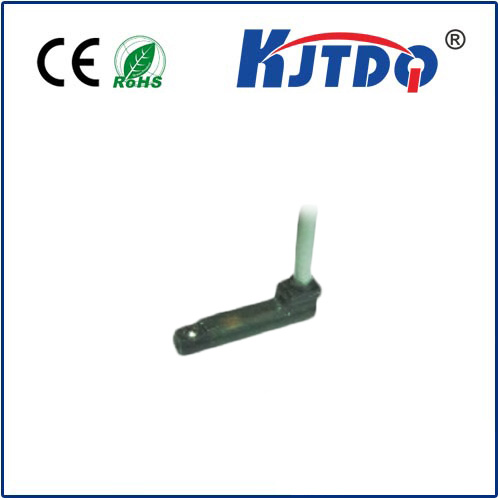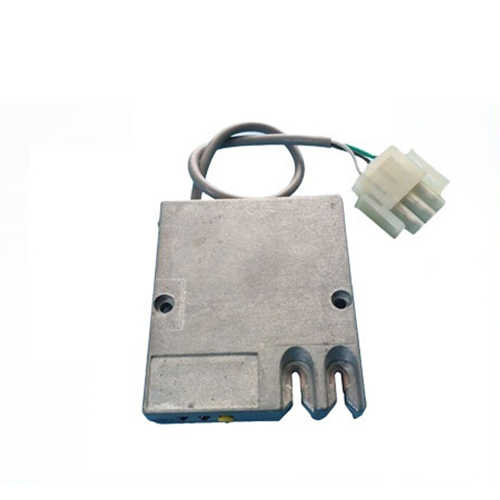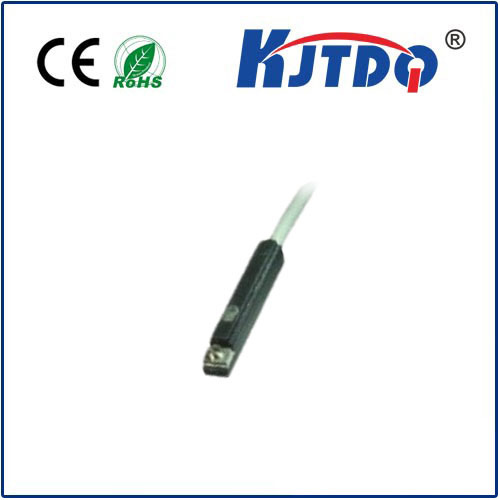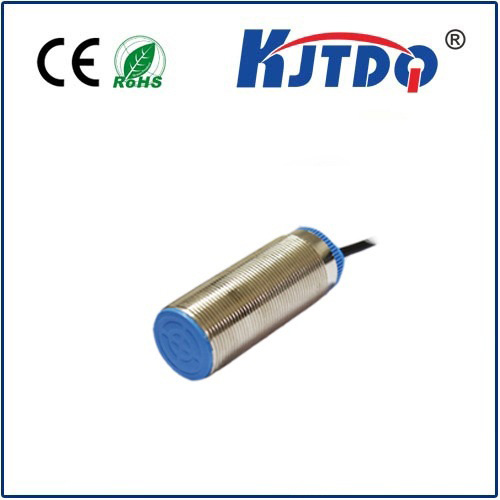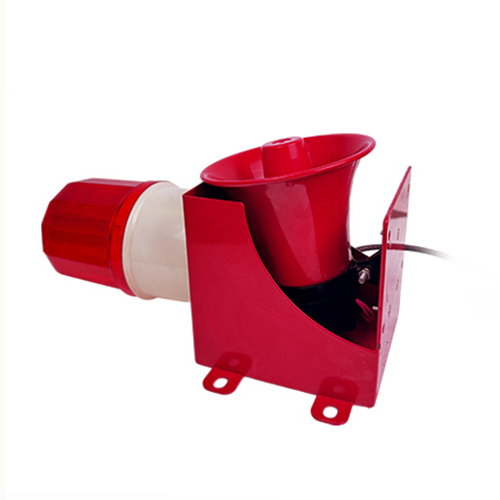infrared photoelectric sensor
- time:2025-09-11 01:58:35
- Click:0
Infrared Photoelectric Sensors: The Unseen Force Powering Automation
Imagine walking into a supermarket: the entrance doors glide open effortlessly as you approach. Invisible to the eye, a silent sentinel detected your presence and triggered the mechanism. This everyday magic is often the work of an infrared photoelectric sensor, a fundamental yet powerful component weaving through the fabric of modern automation and safety systems.
These unassuming devices harness the properties of light to detect objects, measure distances, or differentiate surfaces. They operate on a relatively simple yet ingenious principle: using infrared (IR) light – invisible to the human eye – and the photoelectric effect to sense changes in their environment. Their reliability, non-contact nature, and versatility make them indispensable across countless industries.
The Core Principle: Light, Interrupted or Reflected
At its heart, an infrared photoelectric sensor consists of two primary components:
- An Infrared Emitter (IR LED): This component generates a focused beam of infrared light. Operating in the near-infrared spectrum (typically between 850nm and 950nm), this light is invisible to humans but readily detectable by electronic components.
- A Photoreceiver (Photodetector): Positioned to receive the IR light, this is usually a photodiode or phototransistor. Its job is to convert the incident infrared light into an electrical signal.
Detection occurs based on the interaction between this emitted light and a target object:

- Presence Detection: An object passing between the emitter and receiver interrupts the light beam, causing the receiver’s electrical output to change.
- Reflective Detection: An object reflects the emitted infrared light back towards a receiver located near the emitter. The sensor detects the presence or intensity of this reflected beam.
- Distance Measurement (Proximity): Variations in the intensity or time-of-flight of the reflected light can be used to determine an object’s distance.
Overcoming the Challenge: Modulation is Key
One major challenge for IR sensors is ambient light interference. Sunlight, incandescent bulbs, and other sources emit significant infrared radiation that could easily saturate the receiver and cause false triggers. This is where modulation becomes absolutely critical.
The sensor’s IR emitter doesn’t shine continuously; instead, it pulses the IR light at a specific, high frequency (e.g., several kilohertz). The receiver circuit is tuned to amplify only signals pulsing at this exact same frequency. Think of it like trying to hear a friend whisper in a noisy room – if they whistle a specific tune only you know, you can pick it out easily. Ambient light, acting like random background noise, lacks this specific modulated signature and is effectively ignored. This sophisticated signal processing ensures robust and reliable object detection even in challenging lighting environments.
Diverse Types for Diverse Needs
Infrared photoelectric sensors come in several configurations, tailored for specific applications:
- Through-Beam Sensors (Opposed Mode): These offer the longest sensing ranges and highest reliability. The emitter and receiver are housed in separate units, facing each other. Detection occurs when an object physically breaks the beam traveling directly from emitter to receiver. Ideal for precise detection in conveyor systems, security systems, and packaging machinery.
- Retroreflective Sensors: The emitter and receiver are in the same housing. They rely on a reflector (like a specialized prism or tape) placed opposite the sensor. The emitted beam travels to the reflector and bounces directly back to the receiver. Detection happens when an object blocks this reflected beam path. Provides good range with easier alignment than through-beam, often used in door safety systems and material handling.
- Diffuse Reflection Sensors (Proximity Sensors): Both emitter and receiver are in the same unit. The sensor relies on light reflecting directly off the surface of the target object back to the receiver. Detection depends on the object’s distance, size, color, and surface texture (darker/rough surfaces absorb/reflect less light). Most common and easiest to install, widely used for presence detection, counting, and short-range object detection on assembly lines or vending machines.
- Background Suppression (BGS) / Fixed Field Sensors: A sophisticated type of diffuse sensor. They use triangulation principles to only detect objects within a precisely defined sensing range, ignoring surfaces beyond that set distance. Critical for detecting objects reliably against potentially varying backgrounds.
- Foreground Suppression (FGS) Sensors: The inverse of BGS; these ignore close objects and only detect targets at a set minimum distance away.
Ubiquitous Applications: Where You’ll Find Them
The applications of infrared photoelectric sensors are vast and touch numerous aspects of daily life and industry:
- Industrial Automation: Counting products on high-speed conveyor belts, verifying part presence for robotic assembly, controlling filling levels, detecting jams, positioning control. They are the unsung heroes ensuring production lines run smoothly and efficiently.
- Packaging Machinery: Detecting packaging materials, confirming labels are applied, verifying case sealing, controlling case erectors. Essential for maintaining packaging integrity and speed.
- Material Handling: Detecting pallet presence on conveyors, triggering sorting gates, confirming bin levels, controlling stack height. Keeps logistics flowing.
- Security Systems: Forming invisible beams for perimeter protection (through-beam), detecting motion in dark areas using IR proximity, triggering alarms on door/window openings. Providing non-contact, reliable security.
- Consumer Electronics: Screen dimming on smartphones/laptops when held to the ear, paper detection in printers/copiers, automatic faucets and soap dispensers, gesture recognition.
- Building Automation: Automatic door openers, occupancy sensing for lighting/HVAC control, elevator door safety. Enhancing convenience and energy efficiency.
- Automotive: Garage door safety sensors (prevents closing on objects/people), rain sensors for automatic wipers, obstacle detection in parking systems. Critical for passenger and vehicle safety.
- Vending Machines: Detecting coin/currency insertion, confirming product dispensing, sensing when an item is picked up. Ensures transactional reliability.
The Irrefutable Advantages
Why are infrared photoelectric sensors so pervasive? They offer a compelling set of benefits:
- Non-Contact Sensing: No physical touch means no wear and tear on the sensor or target object, leading to exceptional longevity and reliability.
- High Speed: Detection happens at the speed of light, enabling sensing in the fastest automated processes.
- Versatility: Available in numerous configurations (through-beam, retro-reflective, diffuse) with varying ranges and capabilities to suit nearly any detection challenge.
- Reliability: Modern modulation techniques and robust construction make them highly resistant to ambient light interference, dust (within limits, some are IP-rated), and minor misalignment.
- Cost-Effectiveness: Mass production and mature technology make them a highly economical sensing solution for countless applications. Long Range: Through-beam models, in particular, can detect objects reliably over distances of tens of meters.
- Compact Size: Their small form factor allows for easy integration into tight spaces and complex machinery.
The Invisible Pillars of Progress
From the moment you trigger an automatic door to the complex ballet of a robotic assembly line, infrared photoelectric sensors are constantly working behind the scenes. Their ability to reliably, quickly, and non-intrusively detect presence, absence, or distance using invisible light makes them a cornerstone technology. By







